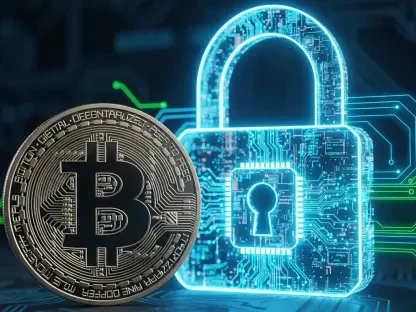The New Frontier: Understanding the Space Industry in the Digital Age
Imagine a world where a single cyberattack disrupts global communications, halts financial transactions, and cripples military operations—all from a breach in space infrastructure, a scenario no longer confined to science fiction but a real and present danger as the space industry becomes a cornerstone of modern life. Once a domain reserved for government exploration, space has transformed into a dynamic commercial ecosystem, driven by private enterprises and strategic interests. Satellite constellations now underpin essential services, from internet connectivity in remote regions to real-time logistics tracking, making this sector a critical lifeline for economies worldwide.
The significance of space infrastructure extends beyond civilian applications, playing a pivotal role in military and defense operations. Navigation systems guide precision strikes, while communication satellites enable coordination across continents. This dual-purpose nature elevates the stakes, as disruptions can have cascading effects on national security and global stability. The industry’s growth reflects its importance, with market value soaring as reliance on orbital assets increases, positioning space as a backbone of the digital age.
Key players in this arena include private giants like Starlink, which deploys massive satellite networks for broadband access, alongside traditional space agencies such as NASA and emerging markets in nations eager to claim their stake. Technology fuels this expansion, with innovations in satellite design and ground-based systems enhancing capacity and efficiency. However, as connectivity grows, so does exposure to risks, setting the stage for a critical examination of how to protect this vital frontier from emerging digital threats.
Emerging Threats and Trends in Space Cybersecurity
Rising Cyber Vulnerabilities and Real-World Impacts
As space assets become integral to daily operations, their vulnerabilities to cyberattacks have surged, particularly in ground-based infrastructure that controls orbital systems. These terrestrial hubs, often less fortified than satellites themselves, serve as entry points for malicious actors seeking to disrupt services. The consequences can be severe, affecting everything from civilian internet access to strategic military communications, highlighting a pressing need for robust defenses.
A stark example unfolded in 2022 with the cyberattack on the Viasat satellite network, which interfered with military operations and impacted thousands of wind turbines across Europe. This incident revealed how a breach in ground systems can ripple through interconnected networks, leaving remote communities and defense forces stranded. Such real-world impacts underscore that the weakest links often lie closer to Earth, demanding urgent attention to secure these critical control points.
Beyond isolated incidents, emerging threats include the growing role of non-state actors and proxies in cyber warfare, complicating the landscape of accountability. These groups, often backed by state sponsors, exploit gaps in security to target space infrastructure, amplifying risks. Yet, within this challenge lies opportunity—innovations in cybersecurity, such as advanced encryption and anomaly detection, offer pathways to safeguard assets, provided they are prioritized and implemented swiftly.
Market Dynamics and Growth Projections
The space industry’s trajectory shows no signs of slowing, with projections indicating significant expansion in satellite services over the coming years. Data suggests that global reliance on space assets for communications, navigation, and earth observation will drive market growth, with estimates pointing to a doubling of economic impact by 2030. This boom positions cybersecurity not just as a necessity but as a key driver of market confidence and investment.
Investors and operators increasingly recognize that robust security measures can differentiate services in a competitive landscape. The potential for cyber threats to derail operations or erode trust has shifted focus toward resilience, with spending on protective technologies expected to rise sharply. This trend reflects a broader understanding that safeguarding space infrastructure is integral to sustaining growth and ensuring service reliability.
Looking ahead, the interplay between cyber risks and industry performance will likely shape strategic decisions. Companies that fail to address vulnerabilities may face not only operational setbacks but also reputational damage, while those investing in cutting-edge defenses could gain a competitive edge. This dynamic underscores the urgent need to integrate cybersecurity into long-term planning as the market continues to expand.
Challenges in Securing Space: A Complex Landscape
Protecting space assets from cyberattacks presents a myriad of technological hurdles, chief among them the difficulty of attributing attacks to specific perpetrators. Unlike physical assaults, digital breaches often leave ambiguous trails, making it challenging to identify and hold culprits accountable. This opacity hampers deterrence efforts and complicates responses, leaving systems exposed to repeated threats.
Geopolitical complexities further muddy the waters, as many space assets serve dual purposes for both commercial and military functions. Satellites like those in the Starlink network provide civilian broadband while supporting defense operations, blurring lines between economic and strategic targets. An attack on such infrastructure could escalate tensions, potentially triggering broader conflicts, and thus requires a nuanced approach to security that accounts for international ramifications.
Market-driven challenges also loom large, with the high cost of implementing comprehensive cybersecurity measures posing a barrier for many operators. Smaller firms, in particular, may struggle to allocate resources toward advanced protections, creating uneven vulnerabilities across the sector. To address these disparities, public-private partnerships offer a viable solution, pooling expertise and funding to bolster defenses, while international cooperation could standardize practices and reduce systemic risks.
The Legal Gap: Current Frameworks and Emerging Regulations
Existing international laws, such as the 1967 Outer Space Treaty, fall short in addressing the nuances of cyber threats to space infrastructure. Drafted in an era before digital warfare emerged, the treaty focuses on physical actions and state responsibility, leaving little clarity on how to handle intangible attacks. This outdated framework struggles to adapt to modern challenges, exposing a critical void in governance.
Compounding this issue is the accountability gap fueled by attribution difficulties, where attackers can hide behind plausible deniability. States and non-state actors exploit this ambiguity, using proxies to conduct operations without fear of reprisal, which undermines trust and stability in the space domain. The lack of clear legal recourse for victims further perpetuates this cycle of impunity, necessitating urgent reform.
Regional efforts, particularly in the European Union, are stepping into this breach with a suite of regulations like NIS2, the Cyber Resilience Act, and the AI Act, alongside the newly enacted EU Space Act as of this year. These laws impose stringent cybersecurity obligations on operators, treating space systems as critical infrastructure and pushing for security-by-design principles. Their extraterritorial reach, often termed the Brussels Effect, could set global benchmarks, though compliance burdens may challenge smaller players and highlight the need for harmonized international standards.
The Future of Space Security: Trends and Predictions
The space industry stands at a crossroads, navigating an evolving landscape of cybersecurity threats and shifting regulatory expectations. As reliance on orbital systems grows, so too does the sophistication of attacks targeting them, pushing the sector to adapt rapidly. Future developments will likely hinge on balancing innovation with vigilance to maintain operational integrity.
Emerging technologies, such as AI-driven threat detection and automated response systems, hold promise for enhancing space security. These tools can analyze vast datasets to identify anomalies in real time, offering a proactive shield against breaches. However, their effectiveness depends on widespread adoption and continuous updates to counter evolving tactics employed by adversaries.
Geopolitical tensions will also shape the trajectory of space operations, with dual-use assets increasingly viewed as legitimate targets in adversarial strategies. A cyberattack misinterpreted as an act of aggression could spark escalation, placing businesses in the crosshairs of international disputes. To mitigate such risks, harmonized global frameworks are essential, alongside innovation that embeds security into the fabric of space endeavors, ensuring a resilient environment for all stakeholders.
Building a Secure Space for Tomorrow
Reflecting on the insights gathered, the exploration of cybersecurity in the space industry revealed a pressing need for updated legal structures to counter digital threats. Discussions highlighted how vulnerabilities in ground infrastructure and the inadequacies of international law had left critical systems exposed, while regional advancements, particularly in the EU, had begun to pave the way for stronger protections.
Geopolitical risks and market challenges had further complicated the landscape, exposing the dual-use nature of assets as a flashpoint for potential conflict. Yet, amidst these hurdles, opportunities for innovation and collaboration had emerged as vital tools to fortify defenses. The focus on emerging technologies like AI had shown promise for transforming security approaches in the years that followed.
Moving forward, actionable steps for stakeholders include prioritizing cybersecurity as a core business strategy, advocating for international cooperation to standardize regulations, and investing in cutting-edge solutions to stay ahead of threats. By fostering a collective commitment to resilience, the space industry can build a sustainable future, ensuring that this final frontier remains a secure foundation for global progress and connectivity.









